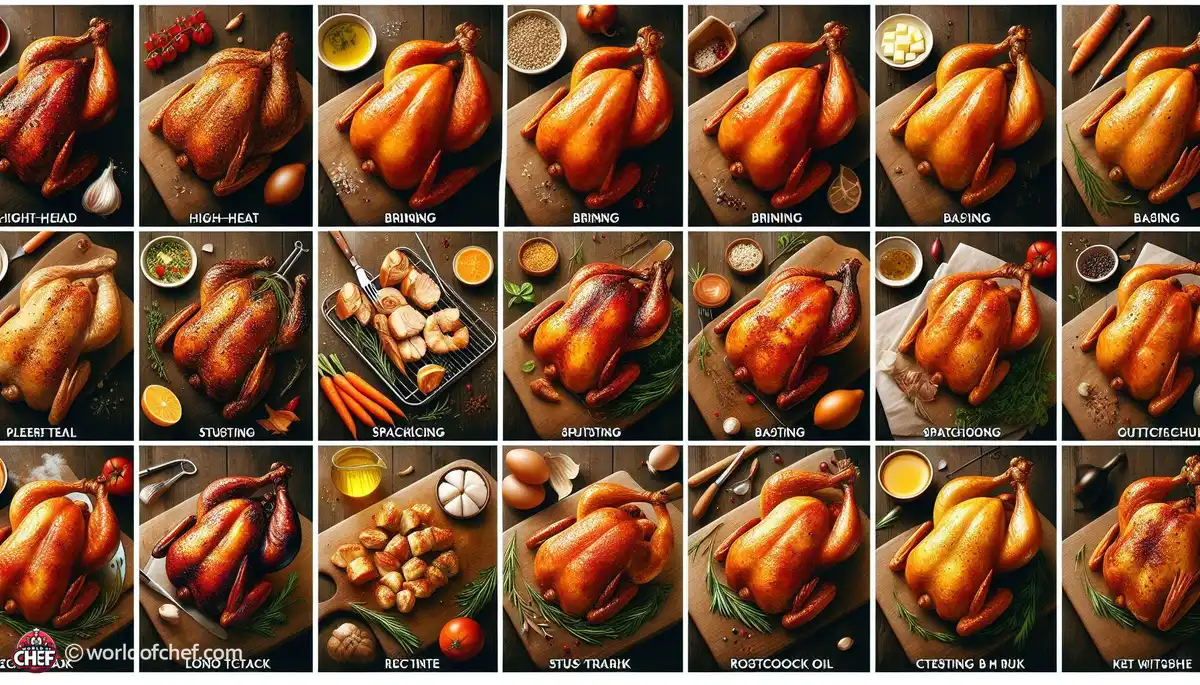
Simmering with Spices: Infusing Flavor into Your Dishes
Emery Donley - Oct 8, 2024 - 8 min read


You should have the best choice for chicken when you are going to roast it. First things first: select a good quality fresh chicken from a store that you can rely upon. Then, ensure that it has plump breasts, a firm flesh, and the skin should be smooth, without blemishes. If it is available, opt for an organic or free range bird to get the flavor and texture at its absolute best.
When selecting a chicken to roast, keep in mind the size. A smaller bird, about 3 to 4 pounds, will cook much faster and more evenly than a larger one. If you're serving a large crowd, you might need to roast a bigger chicken, but plan on adding more time to ensure it's cooked through without drying out.
It is essential to manage and prepare the chicken before you roast it for safety reasons and flavor. Start by unpacking the chicken and pat-drying it with paper towels; this removes excess moisture, meaning the skin will crisp really well when roasting. Finally, check the chicken's cavity for any remaining feathers or giblets and ensure you remove them before going further.
Marinating your chicken before roasting can flavor it really well, and it will stay juicy too. For preparing the marinade, you would want to use a balance of acidic ingredients such as lemon juice or vinegar. Herbs, spices, and aromatics like garlic and onion are also mixed in. You can try different Flavor Profiles to get your perfect combination.
Marinate the chicken in the refrigerator for at least 30 minutes or up to overnight to get the most flavor penetration. This allows the marinade to be completely permeated in the meat for a flavorful outcome. Be sure to seal the container or zip-top bag so that cross-contamination will not occur and it will stay fresh.
Distribute the marinade evenly into the chicken by kneading it into the chicken extensively. It will ensure that each part of the chicken gets enough contact with the marinade. You can poke your chicken using a fork to penetrate more of the marinade inside the meat. Make sure to squeeze out most of the air in your zip-top bag before sealing it in for better exposure of your chicken to the marinade.
Right roasting pan helps to ensure the heat is evenly distributed so that the browning will properly occur. A low-sided, heavy-duty metal roasting pan works best because the heat is evenly distributed and allows air to circulate around the chicken. Glass or ceramic pans should be avoided, as they might not be able to distribute the heat. Trussing the Chicken
Trussing ties the chicken's legs and wings close to its body for even cooking and not to burn. Though it appears dreadful, it is extremely simple with a little practice. Use kitchen twine in tying the legs together while tucking the wings closely under the body.
You would want to insert a meat thermometer into the thickest part of the thigh, but avoid it touching the bone. Once you get a reading on the internal temperature of your chicken, that's it. It's done at 165°F or 75°C. Take it out of the oven right away so it won't be overcooked.
Pat the chicken dry with paper towels to get rid of excess moisture before roasting. This would help the dry skin crunch beautifully in the oven while the wet one is soggier and just undesirable. Dry your chicken on every part thoroughly by giving more attention to its skin and crevices.
The reason for the crisp skin lies in preheating your oven to about 425 degrees or 220 degrees Celsius. What the extreme heat of the blast does is render the subcutaneous fat and does the browning of the outside for a golden crisp end. Then, after that, baste in your preferred cooking temperature and let it cook for about 15 minutes.
Adding flavor and moisture to your roasted chicken is achieved by basting it with pan juices or melted butter. Use a basting brush or spoon to pour the juices over the chicken every 20-30 minutes while cooking. The extra step is well worth it for juicy, flavorful chicken that will surely impress.
Take your chicken out of the oven. Do not cut into it at all. Let it sit for at least 10-15 minutes to allow juices to distribute and give you a more juicy, tender final product.
Tent the chicken loosely with aluminum foil to keep warm while it rests. Be careful not to cover the skin or it will become soggy from the steam; simply place the foil tent loosely on top of the chicken.
Once your chicken is resting, you should carve it. Using a sharp knife, cut the chicken against the grain into pieces of uniform size. Arrange the slices on a platter, garnish with fresh herbs or citrus wedges, and serve.

Emery Donley - Oct 8, 2024 - 8 min read

Russell Comeaux - Oct 8, 2024 - 8 min read

Walter Backus - Oct 7, 2024 - 8 min read

Samantha Thames - Oct 7, 2024 - 6 min read